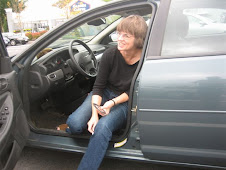Recently, my husband has been receiving unsolicited major league baseball junk in the mail, he thinks because he signed up for insider information to help with his betting on winning teams. Instead he has been barraged with schlock, stuff he wouldn’t ever be tempted to look at in a ball park, let alone buy. It was with similar confusion that I received a package from my college roommate in “amongst” the daily pile of eBay purchases. Inside were two books that she found at a sale, she said silently calling out my name and that of my soon-to-be daughter in law: The latter, a murder mystery about baking muffins, and mine an autobiography of Margaret Drabble, The Pattern in the Carpet, subtitled A Personal History with Jigsaws. I am a jigsaw junkie. I finished the book more quickly than my usual concentrated efforts on 1,000 piece Pomegrantes.
Drabble set out to write a book about the history of puzzles tracing them back to an origin of teaching tools -- whereby children could put together maps of France or England and learn their geography. Drabble occasionally migrates from this intent to overlay her research with reflections on the place puzzles played in her own childhood and again as an adult. Lots of the book seems to echo my implicit thoughts about puzzles: such as, start with the corner pieces and frame edges, move on to related color segments, join these larger assembled pieces together, then realize that it’s time to proceed from a color-based to a shape-based approach to fill in all the background, sit back and enjoy the finished product for a couple of days, take apart and stow away forever. (I am attempting, as I inch into becoming an eBay seller as well as buyer, to offload my puzzles, so far to no success. But alas, I think I have found a semi-willing pack rat who thinks they will be something to do as she recovers from surgery in December. I hope to get rid of at least half of them.)
Drabble associates puzzles with her aunt, the woman in her family who takes the place of an unstable mother whom she really never likes. Auntie Phyl is no Mary Poppins herself but is tolerant of young children, having been a primary school teacher.
Drabble’s writing style defies the logic of her approach to completing puzzles: she is all over the map, using puzzles as a metaphor to understand her need to impose order and get the big picture of her life and her relationships. She goes on many a tangent, investigating mosaics, comparing the items in museum shops vis a vis their art collections, and digressing into London’s industry of publishing children’s books.
In a way she is like Pamuk's Museum of Innocence and his story of collecting the detritus of his beloved’s life as a vehicle to explain his city and his soul. She itemizes those puzzles depicting English cottages similar to the inn her grandparents operated, trying to capture reality onto a "game" medium. She briefly self-discloses when she writes: “… and now that I am old I recognize that I may be condemned to live with an unresolved story and an incomplete picture. I may never fully know why my mother was so unhappy and so angry … But I cannot resist continuing to try to piece things together.”
In one of those six degrees of separation moments, Drabble writes that Julian Barnes loves jigsaw puzzles and her reprise towards the end of her book hearkens to Barnes’ theme in The Sense of an Ending about making up one’s own life story: “We invent our own family tree, we construct our own ancestry, we collect our own fragments, we ignore the pieces that don’t fit, we deny the stories we don’t like … We throw the extra pieces into a bucket, and pretend they belong to some other design, some other puzzle.”
She makes shorter shrift of the "missing piece," not extending that metaphor into her constructing her life and reflecting on it. Personally, as I work on a puzzle, I am outraged when the dog grabs a piece and chews it into an almost unrecognizable pulp. My goal of perfection has been destroyed, even if I manage to force fit the distended cardboard into the pattern. And a lost piece absolutely negates all of my efforts with the other 999 pieces. So too is my life. So much so, I bought a couple of wine glasses etched with a ring of puzzle pieces to acknowledge that as I continue to go about constructing my life story, all pieces must be accounted for and those long lost cherished as a prodigal.
There is one other apt quote in Drabble's book that makes me wonder whether my roommate looked beyond the inside blurbs. Drabble writes about her Aunt Phyl's little white dog in much the same vein as my friend might describe my Bichon: "the dog became so naughty because my aunt had de-trained him, and that, by allowing him to pee on the carpet, lick her face and feet, masturbate against her ankles, jump at visitors and bounce on beds, she was expressing the bad behavior that had been pent up in her by a lifetime of ... propriety ..."
Somehow I'd rather sit down and tackle a new puzzle than train JJ.



No comments:
Post a Comment